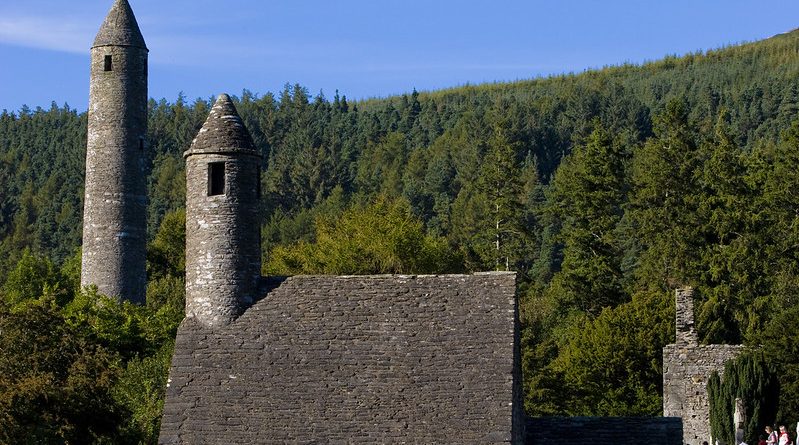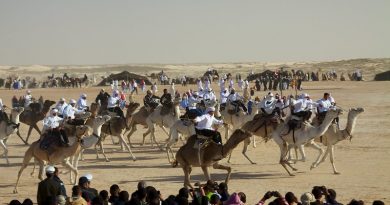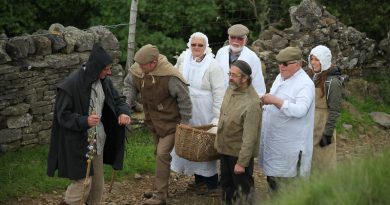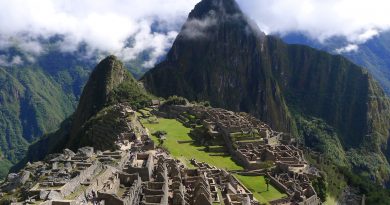A Short History of Ireland – a story of two nations
Ireland’s ancient history is rich with influences from the first settlers (7000BC), Bronze Age settlers, Celts, Vikings, and Norman England. With increasing interest and military pressures from England, the Celts of Ireland had been converted to Christianity, downtrodden, and robbed to such an extent that by 1714, the Irish population owned only 7% of Irish land.
In 1714, Ulster was a mixture of nationalities and religions, a division evident in today’s street names, Irish Street, Scotch Street, and English Street. In England, Oliver Cromwell‘s parliamentarians had come to power and briefly destroyed the rule of the monarchy. Cromwell, came to Ireland and ruthlessly imposed his authority in such barbaric fashion that it still lingers in Irish consciousness. Every person in Drogheda, women and children included, were executed in a fashion that Cromwell described as being in ‘the spirit of God’.
From Drogheda, Cromwell’s Puritan’s marched throughout Ireland making sure that the Protestant English minority would triumph. The 7% of Irish landowners were banished to barren Connaught. ‘The curse of Cromwell’ was complete.
James II, the Catholic King, restored hope in Ireland by appointing Catholics to governmental positions. He hoped to scrap Cromwellian Land Law, but unfortunately for Ireland, he became embroiled in a battle for the throne with William of Orange (William III). In 1690, ‘King Billy’ defeated James II in the Battle of the Boyne, near Drogheda, and took control of Ireland. The battle is still celebrated annually by Orangemen on July 12, during the ‘marching season’, and many murals depict him sitting astride his white charger, on the walls of ‘Loyalist’ housing estates.
A battle known as ‘The Siege of Derry’ also entered the Northern Irish consciousness. James II laid siege to the walled Protestant City of Derry. English reinforcements for the City fled, thinking it was a lost cause for the Protestant army. However, the Derry army held firm and eventually won, becoming a successful symbol of protecting Protestant Ulster from Papists. For the time being all of Ireland remained under English rule.
In 1691, Penal Law started. Catholics were forbidden from buying land or owning stock. Catholicism was outlawed along with Catholic education and professional practice. Irish culture, music, and education was banned. However, ‘open air’ masses, and illegal outdoor schools (hedge schools) arranged by the Catholic Church nurtured Irish tradition, culture and religion. By 1715, Irish Catholics lived in squalor, owning just 5% of the most barren land.
Protestant Dublin thrived. Its elite, consisting of descendants of Cromwellian soldiers, Anglo Normans, and Elizabethan settlers, formed a prosperous upper class known as ‘The Protestant Ascendancy’ who held a Protestant only parliament, under British Rule. It was these educated Protestants that first brought pressure on the Crown to treat Ireland fairly. With inspiration from the American Civil War and the French Revolution, young Irishmen began to see independence as a real possibility. The ‘United Irishmen’ were formed by Belfast Presbyterians, whose leader Wolfe Tone brought men of all creeds together to strive for independence. They tried both political and military manoeuvres while England was pre-occupied with a French war, but were defeated in 1798, when Wolfe Tone was arrested. The Protestant Orange Society (later to be known as The Orange Order) was created at this period to defend Protestant interests in this precarious political climate. In 1800, the Act of Union united Ireland and England politically.
One of Ireland’s great leaders, Daniel O’Connell, came to the fore in 1823 when he founded the Catholic Association. Using peaceful, mass rallies of up to 500,000 people, O’Connell garnered popular support, easily winning a parliamentary election in 1828. Rather than risk the wrath of his followers, parliament passed the 1829 Act of Catholic Emancipation, allowing some Catholics to vote and be elected. O’Connell unfortunately died soon after, while his country was being ravaged by famine.
The Great Famine (1845-51) needlessly took the lives of two million Irish. The potato crop had failed, and Penal Law meant that the impoverished population could not afford reserve potatoes. Whilst there was an abundance of wheat and corn, the British monarch insisted it was almost exclusively for export only. Despite some caring Quakers, Protestant and British landowners, many Irish Catholics spent all their money on food, causing arrears in their outrageously high rent. ‘Poor Laws’ in operation at the time encouraged eviction of non-rent payers, or assisted emigration. Consequently, many were forced into disease ridden ‘coffin ships’ and shipped to America, killing many during the months it took to sail. Mass emigration depleted the population for the next 100 years.
Despite huge bitterness, there was little to challenge British authority. In 1875, an Anglo-Irish Protestant landowner was elected to Westminster. Parnell wanted Irish Independence unlike many of his contemporaries. At 31, he became leader of the Home Rule Party, who wanted a degree of autonomy for Ireland. In 1879, as famine threatened yet again, Parnell teamed up with Michael Davitt to form the Land League. Using widespread agitation it gained reduced rents for tenants and improved working conditions. By encouraging the shunning of Mr. Boycott, the Land League carried out the first ‘boycott’, and the result of their efforts, led Prime Minister, William Gladstone to introduce the Land Act of 1881, improving life for the Irish tenants immeasurably.
In 1892, Gladstone, under Parnell‘s influence attempted but failed to introduce a Home Rule Bill. The Ulster Unionists (formed in 1855) realised that they had narrowly avoided Irish independence. Led by Sir Edward Carson (1854-1935), a Dublin lawyer, the Unionists formed the Ulster Volunteer Force (UVF), who opposed Home Rule. They vowed to fight for a ‘British‘ Ulster if Home Rule was introduced. The British acquiesced, and Carson allowed partial Home Rule in 1914, keeping Northern Ireland separate, thus establishing the principle partition.
As the UVF grew, a republican counter group known as The Irish Volunteers formed, to defend ‘Home Rule for All of Ireland’. They lacked the power of the UVF who were armed by the British government. A civil war loomed but World War I put everything on hold, and men from both religions fought against the Germans.
The 1800s and 1900s saw an Irish cultural revival. Writers such as W.B. Yeats, John Millington Synge, and George Russell, wrote of Ireland’s myths, legends and romance. Others revived the language, sport and music. Irish literary and art figures would be prolific from this period on. A small group known as Sinn Fein (meaning ‘We Ourselves’) was created encouraging Irish MPs to leave Westminster and set up a parliament in Dublin instead as the Socialist movement grew. Jim Larkin and James Connolly brought workers out on strike, and the Irish Volunteers grew in strength. At this point ‘independence’ was still a romantic notion, not a realistic goal.
The Easter Rising changed that. Under the poet Padraig Pearse and James Connolly a small force staged a rebellion in Dublin, based in the General Post Office. They claimed Ireland as a Republic and flew the Irish Tricolour. The rebels were captured within a week. Most of the leaders were executed, turning the small uprising into a massive public outrage. The executed became martyrs and Republican sentiment grew rapidly. In 1918, Sinn Fein stood as the Republican Party and won a large majority of seats. They made a ‘Declaration of Independence‘, shunned Westminster, and set up Dail Eireann, Ireland’s first parliament in Dublin, led by 1916 veteran, Eamonn DeValera. The Irish Volunteers became the Irish Republican Army (IRA) and were authorised to wage war on British troops in Ireland.
An Anglo-Irish war ensued from 1919-1921. Michael Collins came to the fore as the ruthless but charismatic IRA leader, also serving as Ireland’s Finance Minister. The British deployed the ‘Black and Tans’ to deal with the insurgents. These ex-soldiers, given a free hand, used violence and corruption against the IRA and Irish citizens, opening fire at a football match on one occasion in Croagh Pairc, Dublin. The net effect, however, was to push the Irish population further behind the Republican Movement, and into small armed groups who fought the British independently, briefly, and successfully until the July 1921 truce. On 6 December 1921, the Irish reluctantly signed the Anglo-Irish Treaty giving 26 counties independence, and keeping six counties within Britain.
The partition of Ireland meant that Northern Ireland’s six counties had a population of 30-40% Catholic, and 60-70% Protestant. In 1921, James Craig, became the newly formed country of Northern Ireland’s first Prime Minister in a parliament where politics was based primarily on religious and economic grounds.
The Northern Ireland Conflict:
The Northern Ireland parliament in Stormont (1920 – 1972) excluded Catholics from power, making Protestant authority absolute. In Belfast in 1970 the Catholic populace (25%) held just 2.5% of corporate jobs. Catholics were discriminated against in all walks of life and did not have the right to vote. Northern Ireland, along with Portugal, had become the poorest country in Western Europe. During World War II, Protestant and Catholic soldiers excelled themselves in the Battle of Somme and other battlefields, and relative peace remained in Northern Ireland.
When trouble restarted in the late 1960s it took some by surprise, as there had been relative peace for the first time in memory. IRA violence soared as they controversially took it upon themselves to ‘defend the Catholic community‘ from what they viewed as the unjust treatment of a foreign government, and Protestant dominated state bodies. It prompted Northern Irish Prime Minister, Terence O’Neill, to meet the Irish Taoiseach (Prime Minister), and visit local Catholics. Reaction to these symbolic gestures propelled Reverend Ian Paisley into the limelight as the ranting face of extreme Protestantism, who was to play a prominent part right up until the present day. Paisley was “infuriated that Catholics should dare to challenge the authority of a Protestant government”.
Protestant political domination, and lack of civil rights for Catholics, had kept Protestant majorities in virtually every town. In October 1968, the Royal Ulster Constabulary (RUC) police force, violently broke up a Catholic Civil Rights march, and perhaps started ‘the Troubles’. In January, 1969, another civil rights march from Belfast to Derry was attacked by a Unionist mob sporting nailed truncheons, and led by Ian Paisley, just outside Derry. Catholic citizens viewed the RUC as a tool of repression rather than protection. Consequently O’Neill arranged for British soldiers to be sent in for the protection of the Catholic population, and to restore order. Catholics initially welcomed them but Violence and overreaction by British troops would see them rejected by the Catholic community, and they were physically and psychologically barred from many ‘dangerous’ Catholic areas.
In 1971, the British Government attempted to inhibit IRA violence by interning and imprisoning, without trial, hundreds of suspected IRA ‘sympathisers’. This caused a lot of indignation in the Catholic community who believed many of those imprisoned to be innocent and unfairly treated. On 30 January, 1972, thirteen unarmed civilians were shot dead by a British paratroop division in Derry. The event became inconicised as ‘Bloody Sunday’ and is remembered to this day.
No soldiers or politicians were found guilty in the original public inquiry. Locals claim that those killed were innocent protestors, at worst unarmed vandals, gunned down by Paratroopers who were instructed by government officials to enact a crackdown. The victims included seven teenage boys.
Stormont ended in 1972. The ‘Sunningdale Agreement’, a power sharing deal attempted to address civil rights. However, the deal was destroyed and made unworkable instantly by a massive strike which saw the Protestant Ulster Workers’ Strike of 1974 bring the country to a standstill.
Eventually, the IRA started to attack people and buildings both within Northern Ireland and mainland Britain. This ‘War on Two Fronts’ marginalised them increasingly from both Catholics, Protestants and the British. However, Protestant paramilitaries such as the UVF and UDA (Ulster Defence Association) were now carrying out cold-blooded murders of Northern Irish Catholics.
Things reached a crescendo when IRA prisoners in ‘The Maze’, outside Belfast, went on hunger strike, demanding the right to be seen as political prisoners. British Prime Minister Margaret Thatcher, who had adopted a very tough stance on Northern Ireland, opted not to have the prisoners force fed and ten of them starved to death, the most famous being MP Bobby Sands, who has become a popular Republican icon since.
IRA bombs devastated pubs and shopping centres in Guildford, Birmingham, Warrington, Manchester and Brighton. The effect of the bombs was attention from Britain.
The violence was made more difficult to understand, as the main terrorist groups splintered. The IRA broke up into the Official IRA and the Provisional IRA (known as the Provos). The ‘Provos’then split into extremist groups, the Irish National Liberation Army (INLA), and subsequently into DAD (Direct Action Against Drugs), and Continuity IRA (CIRA). Killings had become tit-for-tat murders of soldiers, policemen, prison guards, workmen, and innocent citizens alike. The troubles escalated, and little was done in the way of genuine moves for peace.
The ‘Provos’ are operated as an Irish equivalent of the Mafia – drug running, racketeering and murdering. Little remains of their original ‘idealists‘, save for very controversial claims that their activities are carried out to finance their political wing ‘Sinn Fein’. A parallel can be drawn between the ‘terrorists’ of Palestine, the ANC and the IRA. Viewed as ‘freedom fighters’ and ‘terrorists’ at the same time, ‘idealist’ and ‘fundamentalist‘, ‘just’and ‘criminal‘, depending on the viewpoint. The underclass of people feel drawn into militant and extreme activity based on lack of any power or voice in government, but as that voice is found, and political gains are made, the extreme violence seems increasingly unjustified.
There is no doubt that ‘the Troubles’ have taken a toll on the population. The fear and anger, fuelled by extreme violence on both sides, drove a barrier, quite literally between the communities. ‘Ethnic cleansing’(an unknown term at the time) meant that most housing estates were dominated by one religion or the other. In certain areas, separating walls were built between estates. Belfast was split by the ‘peace wall’ and a walled highway dividing the city in two. Most people, even now, have been effected by ‘the Troubles‘. Their neighbours are policemen, soldiers, Catholic teachers, Protestant teachers, have relations who had been injured, beaten up, harassed by police, and so on. Yet, everyday life is lived in a startlingly normally way.
The Peace Process:
In 1990, things began to change for the good. External factors came to bear. A sympathetic British government, US interest, and EU membership brought economic renewal. The Catholic Churches’ influence was waning in the Republic, which was also booming economically. All of these influences made a big contribution to the signing of the ‘Good Friday Agreement’.
In 1991 and 1992, thanks to John Hume’s Social Democratic Labour Party (SDLP), most political groups met with British Prime Minister John Major. The 1993, ‘Downing Street Declaration’ was the outcome, stating that Britain had no, ‘selfish, strategic or economic interest in Northern Ireland’. In other words, what the people of Northern Ireland vote for, they will get.
Sinn Fein’s leader, Gerry Adams, then announced an IRA ceasefire. British troops reduced their presence, and the streets began to seem normal. In 1995, the British and Irish governments drew up ‘Framework Documents’ outlining a self-governing body, and for relations between that body, Westminster and Dublin. The Framework documents were for discussion only. The main controversy in discussions on the documents was the issue of ‘decommissioning‘. The IRA refused to decommission while British troops remained in Northern Ireland. This was unacceptable to the British or Ulster Unionists who have an understandable mistrust of the IRA. The talks broke down. On February 9, 1996, the cease-fire ended with the IRA’s destruction of Canary Wharf in London.
In May 1997, Tony Blair’s Labour Party won a landslide victory in Britain and brought a renewed commitment to Northern Ireland. Fianna Fail’s Bertie Ahern was an equally good willed leader of the Irish Republic. Northern Ireland Secretary, Mo Mowlam, allowed Sinn Fein into all party talks in Stormont, after a new cease-fire was acknowledged. The decommissioning issue was being dealt with simultaneously with the Stormont talks as suggested by US peace broker, Senator George Mitchell.
On April 10, 1998, after intense negotiations, the historic Good Friday Agreement was signed and greeted enthusiastically by those waiting for the breakthrough at home. The agreement ultimately allowed Northern Ireland’s fate to be decided electorally within its own borders, and also set up good relations with the Republic and allowed religious equality in Northern Ireland. It was resoundingly endorsed.
The new Northern Ireland assembly had legislative and executive control over most areas of life, whilst independent commissions were set up to examine policing and other issues. Assembly elections put the Ulster Unionists (UUP) in charge with the SDLP in second, closely followed by Ian Paisley’s Democratic Unionist Party (DUP) and Gerry Adams’ Sinn Fein. David Trimble became Northern Ireland’s First Minister in the new assembly, with SDLP’s Seamus Mallon as his deputy.
25 Years Later
Disputes and division continue.Violence and killings occur . Peace is not a foregone conclusion. The Orange Order marches remain a very contentious issue.
But more than a quarter of a century later Sinn Fein is now the largest political party . However in 2022 the Unionist parties boycotted the Assembly over concerns that they were being cut off from mainland Britain by customs barriers caused by the complexities of Brexit, when the United Kingdom left the EU following the 2016 referendum .
However, a younger, outward looking generation is growing up, and the longer the peace, the more likely a constructive generation both Protestant and Catholic will emerge.
Many feel that Ireland , so long divided , will one day be re united again.If so, it will be the people of Northern Ireland who will decide .




